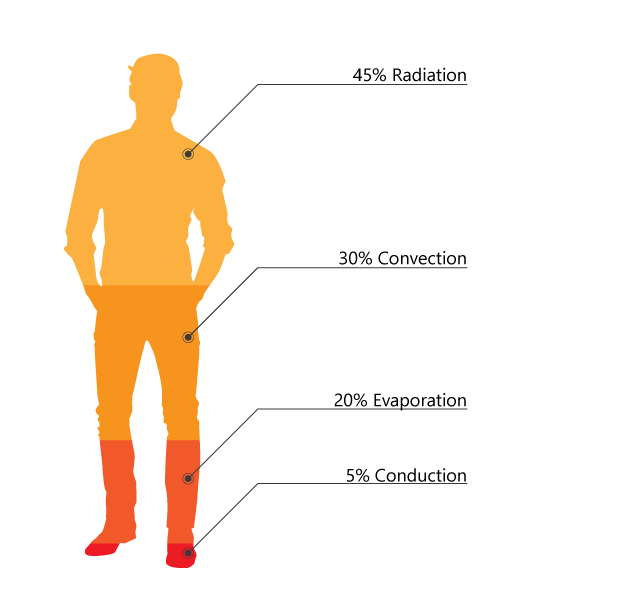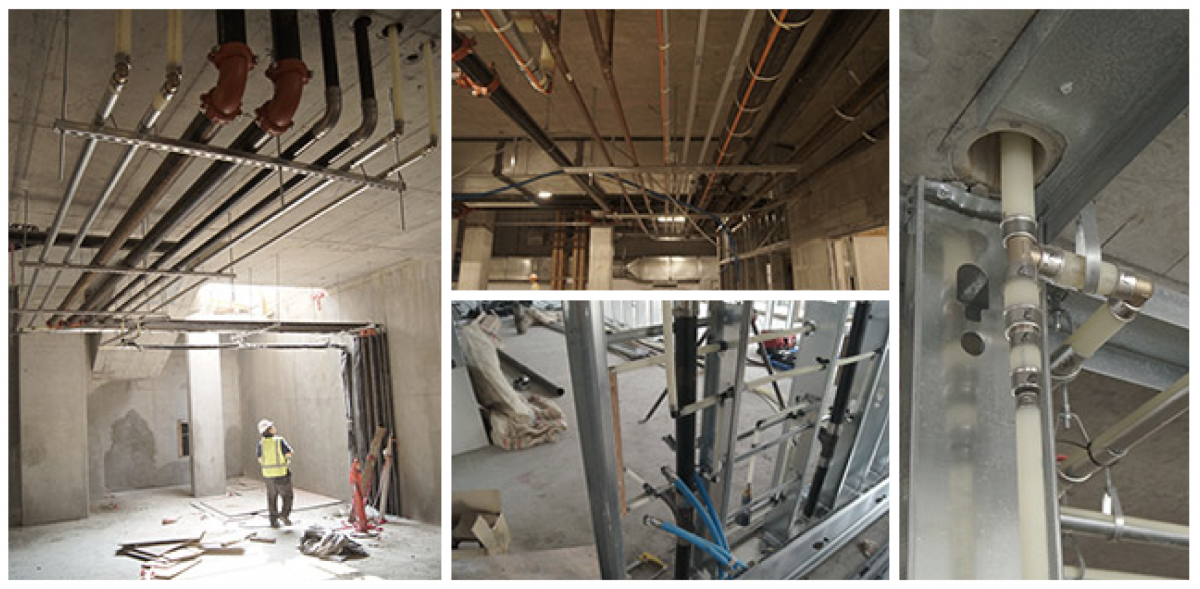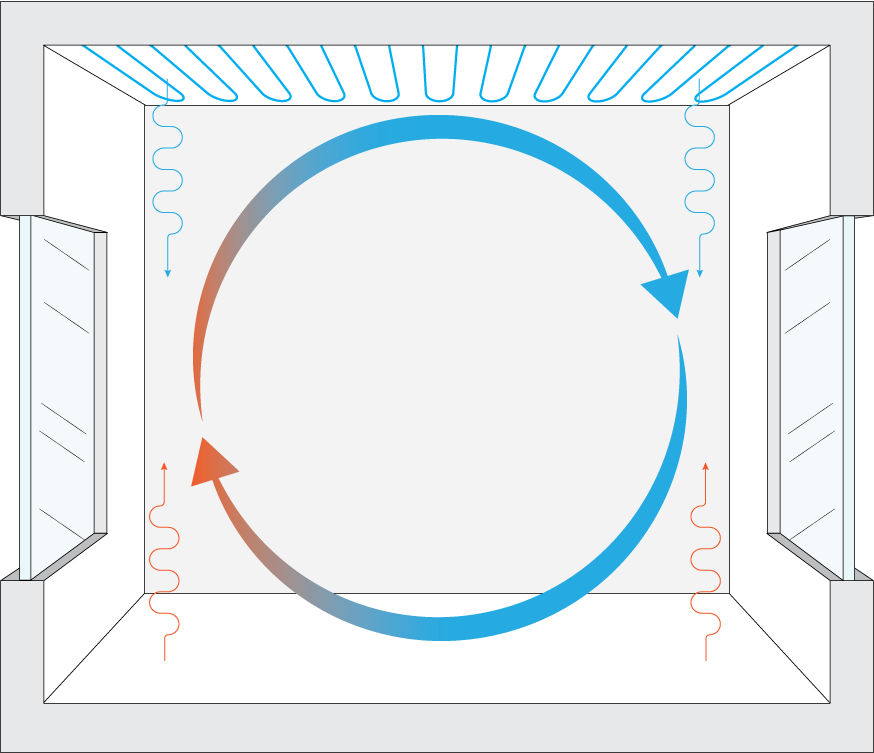You are here
Recent News
CIPHEX West 2018 New Product Competition Winner
The HeatLink Smart system was chosen by a jury of industry experts as the winner in the Controls and Instrumentation Category.
To be a finalist, each product must have demonstrated innovation in terms of utilization for function, while offering a variety of benefits to the industry members who sell, install or specify the products and, ultimately, to the end-user.
The HeatLink® Smart System includes thermostats, modules, actuators, and relays to wirelessly control a heating system. The addition of smart plugs and sensors expand the system into day to day life.
The heart of the system is the Wireless Internet Gateway. The Gateway coordinates the devices, and connects to the building's Internet to create a secure path to the HeatLink® Smart System app.

HeatLink staff proudly accepted the award at our booth.
HeatLink Launches New Smart System
 HeatLink is excited to announce the launch of its new Smart System. The Smart System provides wireless and app enabled control of HeatLink hydronic heating systems for residential and small commercial property owners.
HeatLink is excited to announce the launch of its new Smart System. The Smart System provides wireless and app enabled control of HeatLink hydronic heating systems for residential and small commercial property owners.
Consumers around the world are embracing home automation systems and they want a system that's easy to operate and provides peace of mind when they are away from home. HeatLink’s Smart System app allows for remote management of hydronic installations allowing owners to effectively control and monitor their system.
The HeatLink® Smart System uses the Zigbee Home Automation wireless protocol, ensuring a strong connection between all wireless devices, and a secure path to the HeatLink app. Without the need to run wires, installation and setup is easy and low cost, and adding devices to the system is hassle-free.
Products in the HeatLink® Smart System line include thermostats, zone modules, actuators and relays to wirelessly control a heating system. The addition of smart plugs and sensors expand the system into day to day life. The Smart System can be controlled from anywhere with user friendly Web, Android and iOS apps, and is compatible with other third-party devices including Amazon’s Alexa.
“We’re excited about bringing this new control system to the market,” says Manfred Schmidt President of HeatLink, “this is a notable example of our focus on offering innovative new products that are designed to meet the needs of our customers. I’m proud of the fact that we have a system that is both easy to install and simple to use”. Schmidt continued, “our HeatLink Smart System can be configured for almost any residential or small commercial radiant system.”
BIM Library Live!
HeatLink has partnered with Thomas Product Data Solutions to provide BIM (building information modeling) files on demand. The online platform provides a catalog of over 200 plumbing PEX-a tubing and fittings, and heating PEX-a oxygen barrier tubing items in Revit and CADmep file formats.
Users can access the BIM files under the Resources menu at “BIM Library” and download the items they want. Revit models are dynamically generated on-the-fly using information stored in the database.
“Our customers are moving towards BIM workflows,” says Manfred Schmidt, president HeatLink Group. “Providing them with the resources they need to do their work is important to us.”

HeatLink In the Community

Alberta winters are often unpredictable, and can arrive at any time with a whimper or a bang, and this year was no different. Unfortunately for one new building superintendent out in Camrose, the sudden onslaught of winter revealed a problem with the snow melt system.
While a snow melt system can be a real lifesaver, one set up without the proper know-how can be a headache at best, or a danger at worst.
After a quick phone call our panel shop production supervisor Ryan Roth was on site with Darrell Hannon of Alan Forrest Sales to get the system up and running and melting snow the way it is supposed to (maybe it worked a little too well, though - as of this writing most of our snow is gone, but we have our fingers crossed for a white Christmas!).

HeatLink has an extensive library of materials available to support our products, but we are always happy to go the extra mile to ensure that you have a system that is working the way it is designed to, providing your customers with the comfort and safety they expect.

Veterans Food Drive 2017
Once again we must thank our generous staff for donating food and money to the Veterans Food Bank, run by the Canadian Legacy Project, a not for profit organization which also runs Field of Crosses, Vet Fit, and service dog programs. The CLP supplies food, medicine, and assistance to our veterans throughout the year, as well as providing education about the role of veterans in our communities.
Some of our senior managers were on hand to deliver these donations, which not only help to provide much needed food, but also a service dog to a veteran affected by PTSD, a serious disorder which makes it difficult for soldiers to lead normal lives.

Radiant Cooling FAQ Part 3
Q: What is human thermal comfort?
A: ASHRAE Standard 55 defines thermal comfort as “that condition of mind that expresses satisfaction with combinations of indoor thermal environmental factors and personal factors that will produce thermal environmental conditions acceptable to a majority of occupants within the space.”
ASHRAE has established the standard for Thermal Environmental Conditions for Human Occupancy, or ASHRAE Standard 55 . This standard sets the boundaries for thermal comfort at: 50% RH (Relative Humidity) with 75-80ºF Operative Temperature for the summer (cooling) period.
This is the comfort area that optimizes the percentage of people who are comfortable, with less than 10% being dissatisfied at any moment. ASHRAE Standard 55 sets the floor temperature at 66ºF (cooling) to 84ºF (heating) for optimal occupant comfort.

This graphic shows the breakdown of human thermal regulation through heat transfer methods.
Q: What is Local Thermal Discomfort?
Local Thermal Discomfort is anything that causes human thermal comfort to be disrupted or otherwise not reached.
The main culprits of thermal discomfort are:
Radiant Asymmetry, which occurs when the thermal radiation field surrounding the body is not uniform due to differing surface temperatures. This is often caused by direct sunlight, but occurs anytime there are large temperature differences between surfaces in a room.
Vertical air temperature can influence thermal comfort through stratification of the air temperature. This can result in air that is warmer at head level and cooler at ankle level, which is less favorable and more common than the reverse.
Floor surface temperature can become uncomfortable for occupants if it is too warm or too cool (the standard only addresses comfort for occupants wearing footwear).
Radiant Cooling FAQ Part 2
Welcome to part 2 of our radiant cooling FAQ coverage. If you missed the last installment, you can find it here.
Now that you're all caught up, let's dive into this month's questions:
Q: What is a typical room set point in a cooling application?
A: One of the many advantages of a radiant cooling system is the potential for energy cost savings, as illustrated by the ability to design for higher room set points. With forced air cooling systems it is typical to design for as low as 72-74ºF, but with radiant cooling systems it is possible to design for 78ºF or higher while providing higher levels of human thermal comfort (for detailed information on human comfort factors, see ASHRAE Standard 55). This is due to the greater influence of radiant systems on operative temperature over that of forced air.
Q: What is an acceptable relative humidity range?
A: We all know that if you pour a glass of cold water on a hot day and leave it on the counter it will “sweat” as the humidity of the room condensates on the glass. This same process can happen with an improperly designed radiant cooling system, creating all sorts of potential problems down the line. When designing a radiant cooling system is is important to keep the dew point at or above the supply water temperature for the system.

With surface temperature minimums of 66ºF and room set points of 78ºF or higher, the relative humidity may be allowed to run as high as 50%. This provides a significant safety factor and a reasonable time frame to react to changes in dew point before condensation can occur on the cooling surface. The chart below offers a simplified view of dew point settings at Relative Humidity % x Air Temperature..

Watch for Part 3 in the October edition of In the Loop.
Site Visits & Photo Submissions
HeatLink® sales and technical staff are increasing their job site visits this year, with positive feedback on all sides. These visits allow us to aid in troubleshooting, answer installation questions, and build customer product knowledge at the same time our PEX-a, fittings, and tools are actually being used.
Not only have our customers benefitted, but so has HeatLink® - we have been able to better learn how our products are used, and what challenges are faced that we can better address, and use to help improve our products. It's also a great opportunity to see the level of craftsmanship and care that our customers take in their work, in all aspects of design and construction.
While we can't make it out to every project, we still want to see the work you do, and the pride you put into every HeatLink® potable or radiant system installation - send us your photos and your work could be featured in a future In The Loop newsletter.
Send your photos (2MB max) to jeves@heatlink.ca with the subject line Great Installations 2017

In the Field: TwistSeal Manifolds - 15 Years of Successful Service
Isn’t it great when things just work?
We know this isn’t always the case - whether it’s your toaster, car, or teenager, there are plenty of things that at 15 years of age tend to need a bit more encouragement to do their job.
Not needing such a boost, however, is HeatLink’s TwistSeal Manifold. A recent visit to the University of Calgary’s ICT building by members of our design and management teams showed that after over 15 years in service - installed in an inverted position, no less - our TwistSeal technology continues to be reliable and worry free.
Completed in 2001, the ICT building has radiant cooling running at an average of 61ºF (16ºC) throughout, which has been regulated by the manifolds without incident. The maintenance supervisor was glad to learn that if an issue ever arises, the manifolds are designed for field service with minimal down time.
Our team was pleased (though not exactly surprised #humblebrag) to learn of the incredible success the TwistSeal manifold has been for the maintenance team at the University of Calgary, and we look forward to visiting after another 15 successful years.
Radiant Cooling FAQs
With summer upon us and (in Calgary, at least) the usual switch from cries of “it’s too cold!” to “it’s too hot!” along with it, Radiant Cooling is on all of our minds here at HeatLink. In an effort to avoid brain freeze, we thought we would answer some of our most frequently asked questions about Radiant Cooling over the next few months, starting with:
What is the difference between designing and installing a radiant heating system and a radiant cooling system? Nothing! The systems and application behave exactly the same. The effects of floor coverings, tube size, tube spacing, constructions methods, and all of the hydraulics are exactly the same.
The only significant difference is the transfer coefficient from the cooling surface to the space. The transfer coefficients change because of the way that the surface affects convective currents and transfer. A heated floor creates a significant convective current as the air is heated and becomes buoyant whereas a cooling floor decreases convective currents as the air is cooled and becomes less buoyant. Convection at a ceiling is affected in a similar manner with cool less buoyant air dropping and warm buoyant air staying at the ceiling. A wall application remains at or near a constant as the air can flow past it in either direction without physical boundaries.

Pages
Theme by Danetsoft and Danang Probo Sayekti inspired by Maksimer







